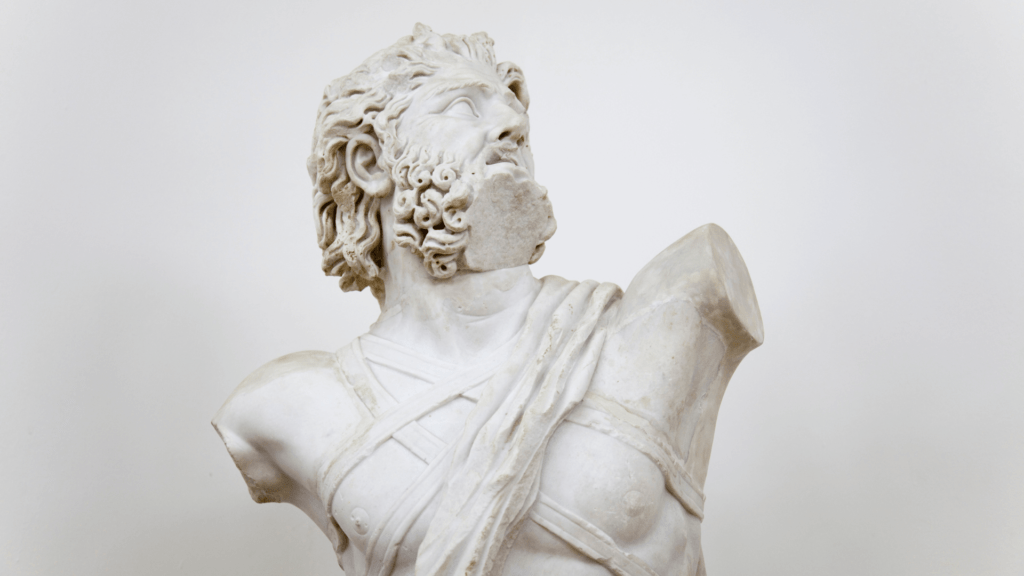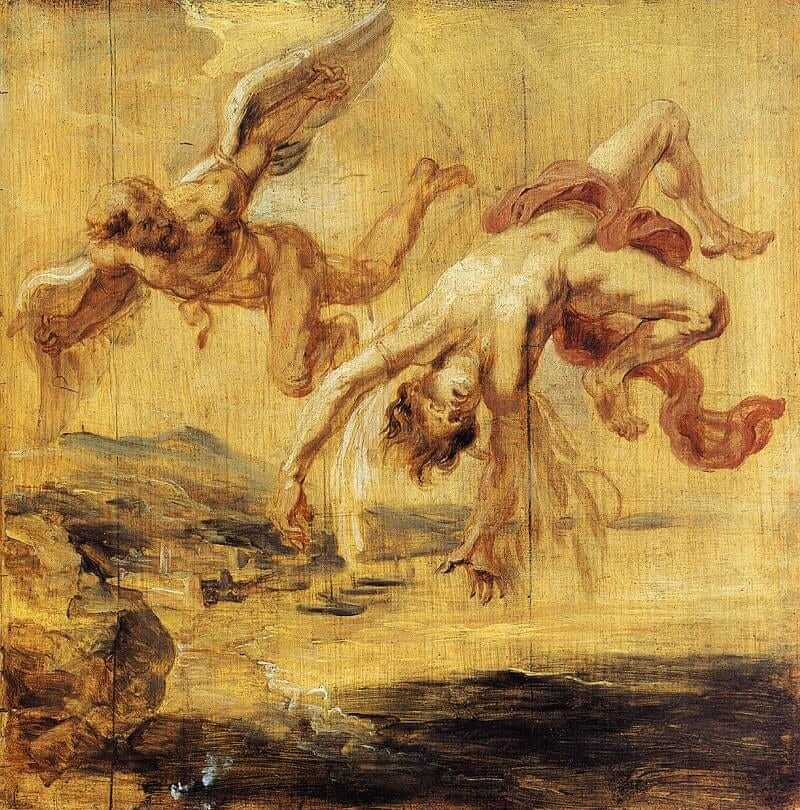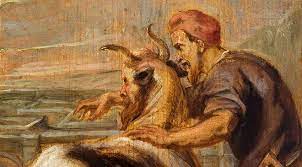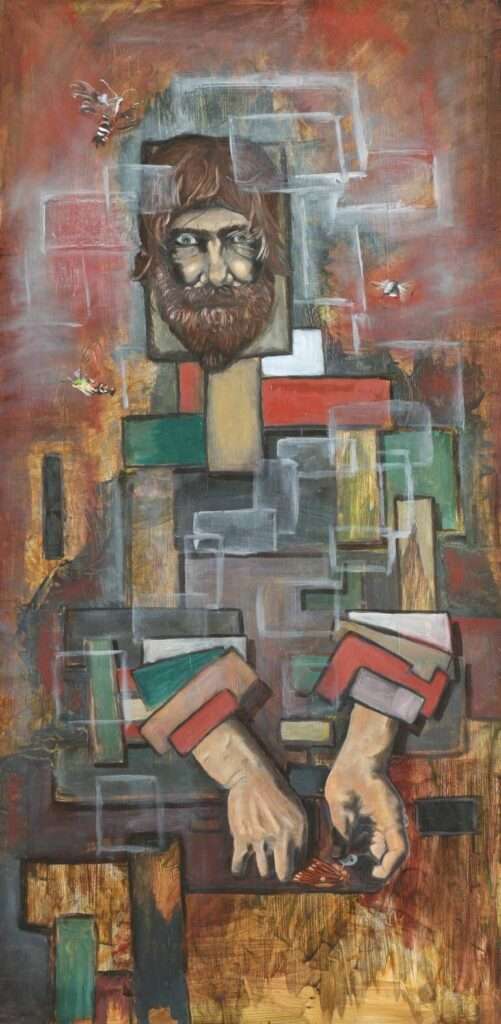Daedalus stands as a towering figure in Greek mythology, emblematic of human ingenuity and complex morality. Renowned for his unparalleled skill in craftsmanship and invention, his narrative weaves through the tapestry of ancient myths, leaving an indelible mark on the cultural consciousness. This article aims to shed new light on the character and influence of Daedalus, delving beyond the surface of well-trodden tales to unearth original insights and analysis. Through a comprehensive exploration of his life, from his illustrious creations to his profound tragedies, we will chart the contours of his enduring legacy. Our journey into Daedalus’ world is not just a recount of mythological events, but an attempt to understand the deeper themes and lessons that resonate with the trials and tribulations of the human experience.
| Origin | Greek Mythology |
|---|---|
| Classification | Artisan/Hero |
| Family Members | Eupalamos (Father), Alcippe (Mother), Icarus (Son) |
| Region | Greece, Crete |
| Associated with | Invention, Architecture, The Labyrinth, The Wings of Icarus |
I. The Lineage and Early Life of Daedalus
Noble Origins and Prodigal Talent
Daedalus, whose very name suggests “cunningly wrought,” was born to a family of royal descent and showed signs of exceptional talent from a tender age. His lineage, often linked to the ancient kings of Athens, granted him an auspicious start, with access to the finest education and resources of the time. The myths whisper of a child who could outwit the labyrinthine complexities of the world with the same ease as he would later craft them into existence.

Mastery Over Arts: The Journey of an Apprentice
As a young apprentice, Daedalus’ natural aptitude for invention and design quickly became apparent. Under the tutelage of the renowned craftsmen of Athens, his hands fashioned wonders that spoke of a mind at once both architect and artist. He mastered sculpture, metalwork, and carpentry, transcending the role of a mere artisan to become a creator of things the world had never seen. His early works, lost to time but for the echoes in ancient texts, laid the foundation for the legends that would follow.
II. Major Works and Inventions of Daedalus
Architectural Marvels and Mythical Creations
The legacy of Daedalus is indelibly etched in the annals of mythology through his major works. Foremost among these is the Labyrinth, a maze so ingeniously complex that it ensnared the fearsome Minotaur. Similarly, the wings he crafted for his son Icarus symbolize the daring ingenuity and tragic ambition of humanity. Beyond these, his repertoire brimmed with diverse inventions, each a testament to his mastery over the physical world and his foresight into the realm of possibility.

Insights from Antiquity
The ancient texts offer more than mere accounts of Daedalus’ creations; they present a narrative rich with allegory and meaning. The Labyrinth, often interpreted as a metaphor for life’s intricate challenges, and the wings of Icarus, representing the perilous balance between aspiration and hubris, are imbued with philosophical depth. These stories, while mythical, provide unique insights into the human condition as seen through the lens of a civilization that valued wisdom as much as valor.
III. Daedalus in Mythology and Culture
The Labyrinth and the Minotaur
Daedalus’ ingenuity is perhaps best encapsulated in the myth of the Minotaur, the beast confined within the Labyrinth. This story, more than any other, showcases his dual nature as both creator and prisoner of his own designs. The Labyrinth represents a physical and symbolic masterpiece of complexity and entrapment, reflecting the nuanced layers of human consciousness and the inescapable nature of one’s own creations.

Icarus’ Flight
Equally compelling is the story of Icarus, Daedalus’ son, who flew too close to the sun with wings fashioned by his father. This poignant myth speaks to the quintessential human struggle between the yearning for greatness and the peril of overreaching. It’s a narrative that has transcended time, cautioning against the temptation of hubris and the price of disobedience.
Cultural Resonance and Historical Impact
The cultural and historical significance of Daedalus’ tales deeply permeates, reflecting the society from which they originated. These tales actively engage with themes of intellect against instinct, control versus chaos, and the interplay between technological progress and ethical considerations. Historically, artists and writers have continuously revisited these myths, adapting and evolving them to align with the cultural ethos of their times, from Renaissance art to contemporary literature.
IV. The Downfall of a Hero
Tragedy Born from Brilliance
The narrative arc of Daedalus is not without its shadows, most notably the heartrending loss of his son, Icarus. This tragedy underlines the inherent risk of brilliance — the potential for great minds to engender their own downfall. Daedalus’ life, marked by moments of triumph, is also a testament to the Greek concept of ‘hubris’ — the excessive pride that precedes a fall. His story serves as a poignant reminder that the line between genius and folly is often perilously thin.
Ethical Parables from Myth to Modernity
Beyond the sorrow lies a wealth of moral and ethical lessons. Daedalus’ experiences invite us to ponder the consequences of our actions, the ethical implications of our creations, and the responsibilities that come with knowledge and power. In a modern context, his tale resonates with contemporary issues such as the ethics of scientific discovery and innovation. The story of Daedalus encourages a reflective pause in our relentless pursuit of progress, prompting us to consider the price of our ambitions.
V. Daedalus’ Legacy in Art and Society
Daedalus’ Enduring Muse in the Arts
The figure of Daedalus has long served as an inspirational muse for artists and writers, his story offering a canvas rich with thematic depth. From the sculptures of ancient Greece to the literary masterpieces of the modern era, his influence permeates a broad spectrum of artistic expression. In Renaissance art, Daedalus has been depicted as the epitome of the Renaissance man, his creative spirit resonating with the period’s emphasis on humanism and individual genius.

Literary Echoes and Societal Reflections
In literature, Daedalus’ multifaceted character has been explored in genres ranging from classical tragedies to contemporary fiction. Writers have often drawn parallels between Daedalus’ narrative and the complexities of human nature, using his story as a conduit to explore themes of freedom, innovation, and the consequences of human actions. The myth has provided a framework for commentary on societal advancements and the ethical dimensions of technology and progress.
The Modern-Day Daedalus
Beyond the realms of art and literature, Daedalus stands as a symbol within society, emblematic of the ingenious spirit. His legend has been invoked in discussions about scientific inquiry, technological ethics, and the balance between creativity and responsibility. As a cultural touchstone, Daedalus reminds us that our creations can both elevate and endanger, a notion ever pertinent in an age where technology increasingly shapes our lives.
VI. Modern Interpretations and Relevance of Daedalus
Daedalus Reimagined in Contemporary Media
In modern media, Daedalus has been reinterpreted as a figure of prophetic insight, often symbolizing the double-edged sword of innovation. Films, novels, and plays reimagine his myths to reflect current societal dilemmas, portraying him as everything from a tragic hero to a cautionary archetype. This reinterpretation demonstrates the timeless nature of his story and its adaptability to the discourse on the human condition within the framework of contemporary challenges.

Lessons for Today: Innovation and Responsibility
Daedalus’ tale is more than a mere relic of the past; it provides a narrative framework for examining today’s ethical quandaries in the realm of technology and innovation. As we stand on the precipice of breakthroughs in artificial intelligence, genetic engineering, and space exploration, the story of Daedalus urges us to weigh the consequences of our explorations and creations. His myth serves as a metaphor for the modern innovator, reminding us that with great power comes the need for foresight, ethical considerations, and a responsibility towards the greater good.
VII. Conclusion
In retracing the mythos of Daedalus, we’ve navigated the labyrinthine depth of his character, from his noble origins to his profound impact on art, literature, and society. We’ve cataloged his legendary inventions and the poignant myths that immortalize his genius and foibles alike. Our exploration revealed the cultural resonance of his story, which, through centuries, has served as a canvas for humanity’s complex relationship with creativity and consequence. Daedalus emerges not just as a mythic artisan but as a timeless symbol of the innovative spirit — cautioning us about the balance between ambition and hubris. This article has endeavored to offer original insights and a comprehensive examination of a figure whose legacy endures in our collective consciousness, prompting us to reflect on the ethical dimensions of our advancements and the timeless human quest for knowledge.
